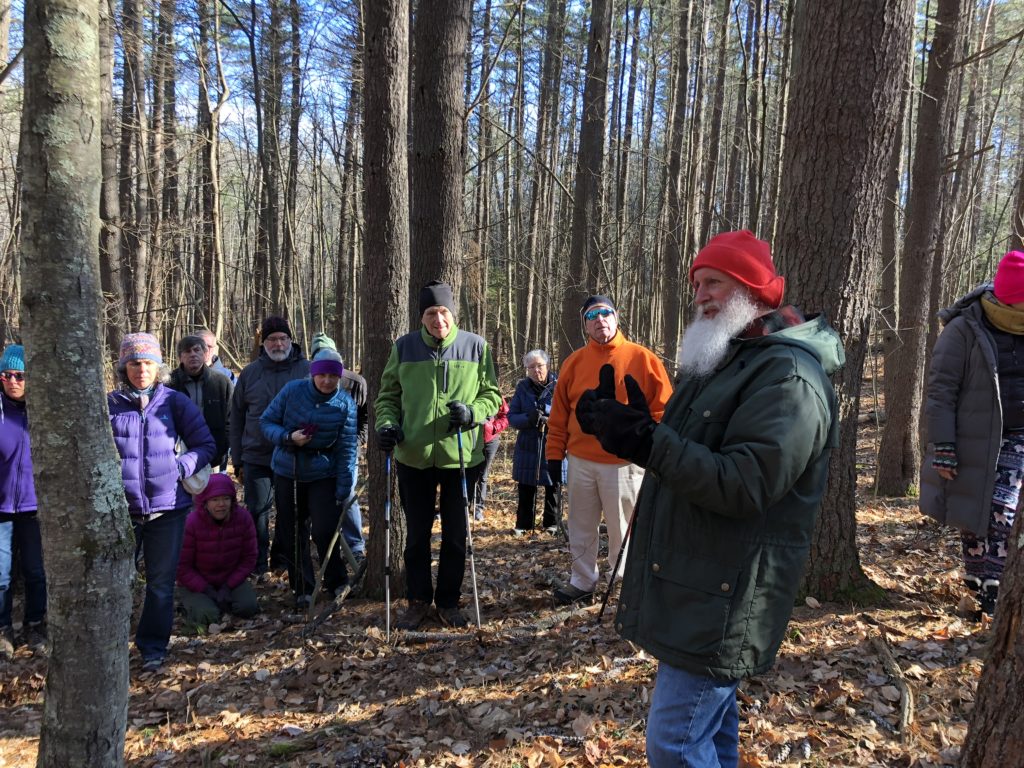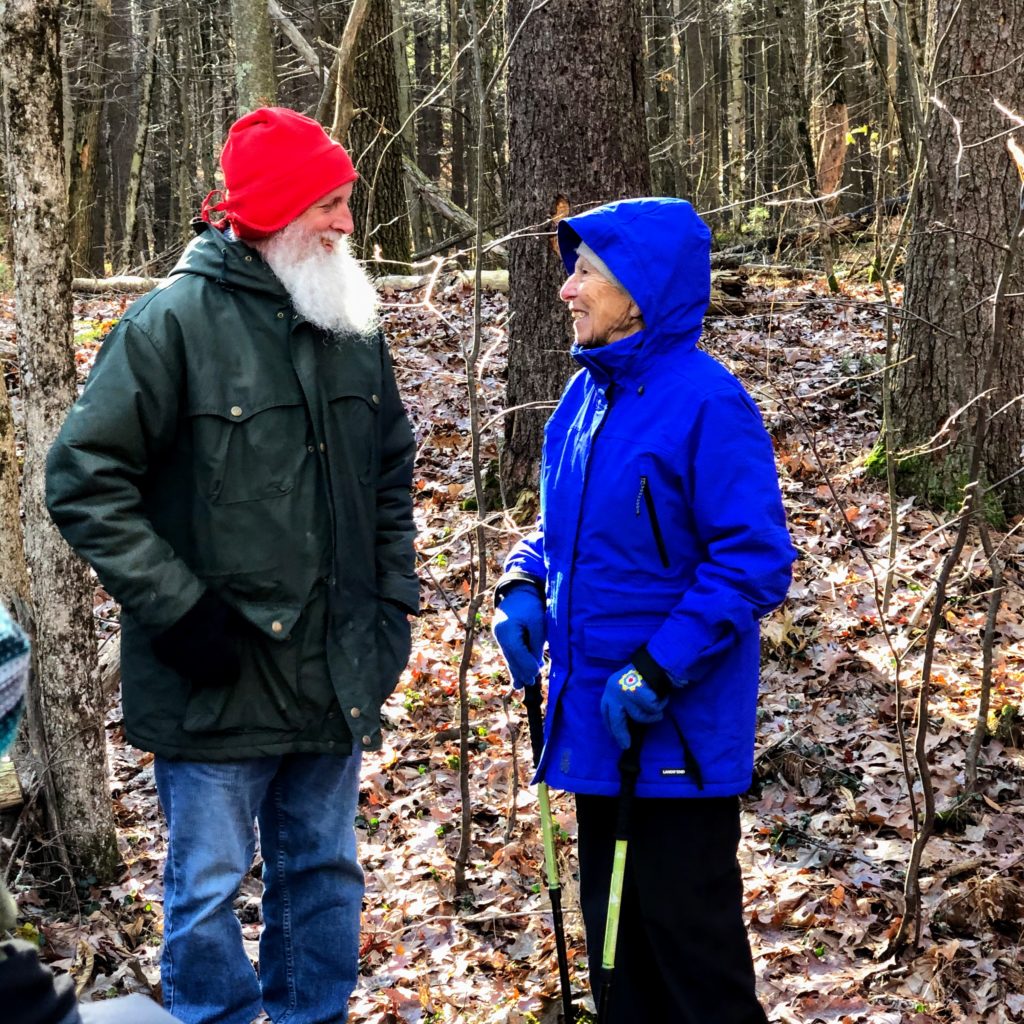
I scraped back the young, thin bark of a black birch sapling, sticking my nose to the green wood. It smelled fresh, with a sharp hint of mint that I hadn’t smelled in the forest before.
“What does it smell like?” prompted Tom Wessels, calling out his question to the audience of the OptOutside walk, hosted by the Groton Conservation Trust (GCT) on Friday, November 29th. “Wintergreen!” shouted someone in the group of about forty people who joined Wessels and the GCT on a balmy winter day.
“Yes!” Wessels nodded with a smile and continued to detail where the smell came from; methyl salicylate, a chemical compound that is a defense against herbivorous insects. I’ve seen countless black birch during my fieldwork as a master’s student in forest ecology, and never once have I thought about the intricacies that lay below the bark. Black birch will never be the same tree.
The group passed around pieces of black birch saplings to one another before continuing their walk and natural history lesson on the Skitapet land.
This is the fourth time Tom Wessels, an ecologist and educator, joined GCT to lead a community walk. These OptOutside events, inspired by the REI campaign, have been hosted by GCT for the past five years. This is the fourth time Tom Wessels, an ecologist and educator, joined GCT to lead a community walk.
Walking and interpreting the landscape is something Wessels does well. Tom Wessels is known for his close attention to detail and history of the New England forested landscape. The author of several books about the environment, he is most well-known for his 1997 classic, Reading the Forested Landscape: A Natural History of New England.
Our next stop led us to a small stump, about two feet high and covered in a lush, green moss. The flat top of the stump indicated it had been cut at one point for logging or trail maintenance, and not broken in a windstorm. The stump, despite being cut likely twenty years ago, was very much alive, as evidenced by the callused bark growing over the cut, in a slow attempt to heal and grow on.
Wessels explained the stump was root grafting, relying on water and nutrient from the roots of the living pines nearby. The stump existed in the shadows of these pines, covered in fallen leaves and moss. Blink and you would likely pass this stump by on your normal walk in the woods.

Our backyards often become familiar to us. A theme in Wessel’s work is attentiveness, which he suggests brings a deeper relationship with landscape. “The story of a place comes forth as the landscape reveals its experience through our careful attention,” writes Wessels in Forest Forensics, A Field Guide to Reading the Forested Landscape.
One of our last stops was at a small white birch tree, one of my favorite species for its iconic brightness in our gray northeastern hardwood forests. “That color serves a purpose,” Wessels said, once more illuminating the details of the forest. The white color reflects light, keeping the internal tree temperature stable in the fluctuating winter temperatures of northern latitudes.
With increased temperatures becoming more common during winter due to climate change, the birch may be in trouble, Wessels shared. Massachusetts may become too warm, and the birch will likely disappear from the lower part of New England. After this there was the briefest moment of silence. I imagine we were all thinking something along the same line: what would our New England forests be without white birch?
A week after the walk, I stumbled across a quote from Doug Duren, a conservationist and consultant from the Midwest: “It is not ours, but our turn”. My mind immediately returned to the walk with Wessels and town members. The Skitapet land was donated in 1983 by Jeanne and Joseph Skinner. They, along with the Taplin and Peterson families, used to share the land as a camping retreat from the city. Before that, the abundance of white pine led Wessels to believe it was once agricultural land.
Now, the land is shared by the town and holds a handful of trails that take you through a white pine stand and a hardwood forest dominated by red oak trees. Each passerby adds to the value of the land. To observe, is to know the land more deeply. To observe together, is to build community.
When I next see a black birch sapling, I will scratch the bark again to get that sweet wintergreen smell, remembering Wessel’s stories about the tree. And of course, I will also think of Groton.
Olivia Box is a freelance science writer. This essay also appeared in The Groton Herald on December 13, 2019.

